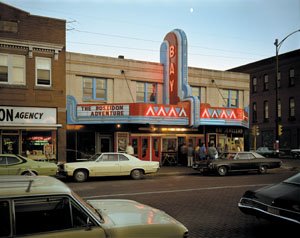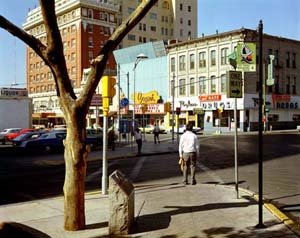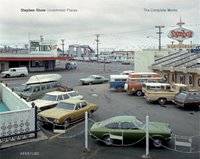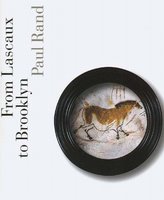


+:+:+:+:+:+:+:+:+:+:+:+:+:+:+:+:+:+:+:+:+:+:+:+:+:+:+:+:++:+:+:+:+:+:+

Uncommon Places
Stephen Shore
ISBN: 1931788340
Published by Aperture in 1982 and long unavailable, Stephen Shore’s legendary Uncommon Places has influenced a generation of photographers. Among the first artists to take color beyond advertising and fashion photography, Shore’s large-format color work on the American vernacular landscape stands at the root of what has become a vital photographic tradition. Uncommon Places: The Complete Works presents a definitive collection of the original series, much of it never before published or exhibited.
Like Robert Frank and Walker Evans before him, Shore discovered a hitherto unarticulated version of America via highway and camera. Approaching his subjects with cool objectivity, Shore’s images retain precise internal systems of gestures in composition and light through which the objects before his lens assume both an archetypal aura and an ambiguously personal importance. In contrast to Shore’s signature landscapes with which “Un-common Places” is often associated, this expanded survey reveals equally remarkable collections of interiors and portraits.
As a new generation of artists expands on the projects of the New Topographic and New Color photographers of the seventies—Thomas Struth (whose first book was titled Unconscious Places), Andreas Gursky, and Catherine Opie among them—Uncommon Places: The Complete Works provides a timely opportunity to reexamine the diverse implications of Shore’s project and offers a fundamental primer for the last thirty years of large-format color photography.
At age twelve, Stephen Shore’s work was purchased by Edward Steichen for the Museum of Modern Art. At twenty-four, he became the first living photographer to have a one-man show at the Metropolitan Museum of Art, New York. Other one-man show venues include the Museum of Modern Art, New York, the Art Institute of Chicago, and the Kunsthalle Düsseldorf. He has received two National Endowment for the Arts Grants and a Guggenheim Foundation Grant, and has been the Chair of Bard College’s photography department in upstate N.Y. since 1982.

FARMAX : Excursions on Density
MVRDV
edited Winy Maas, Jacob van Rijs, Richard Koek
ISBN 978 90 6450 587 4
Vast areas of the Netherlands and other states seem to be filling up with a suburban 'matter' of low cost housing, low rent offices, warehouses and other low density elements. How are we to cope with this matter that is turning our environments into one 'sea of mediocrity', one vast 'greyness', an equation of difference and individualism? Is it possible to reconsider this situation by carrying density to extremes and ruffling the texture with inserts or polarities? This book examines the possibilities of these extremes. It sets out to discover the prospects and limitations, the world of the extreme Floor Area Ratio, FARMAX. Conceived and edited by Winy Maas and Jacob van Rijs with Richard Koek and produced by MVRDV, FARMAX reads as an architectural narrative composed of studies and designs made by MVRDV and students from Delft University of Technology, the Berlage Institute and the Rotterdam Academy of Architecture and Urban Planning, along with contributions by other authors.

From Lascaux to Brooklyn
Paul Rand
ISBN: 0300066767
One of the world's leading graphic designers, Paul Rand has had a profound influence on the design profession: his pioneering work in the field of advertising design and typography has helped elevate "commercial art" to one of the fine arts. In this lively and visually arresting book, Rand awakens readers to the lessons of the cave paintings of Lascaux—that art is an intuitive, autonomous, and timeless activity—and he shows how this is conveyed in works of art from the Leaning Tower of Pisa to a painting by Cézanne, African sculpture, a Gorgan pitcher, and a park in Brooklyn, all of which are aesthetically pleasing no matter what their era, place, purpose, style, or genre. Rand defines aesthetics and the aesthetic experience, in particular as it affects the designer, and he helps members of his profession articulate and solve design problems by linking principles of aesthetics to the practice of design.
Illustrating his ideas with examples of his own stunning graphic work, as well as an eclectic collection of masterpieces, Rand discusses such topics as: the relation between art and business; the presentation of design ideas and sketches to prospective clients; the debate over typographic style; and the aesthetics of combinatorial geometry as applied to the grid. His book will engage and enlighten anyone interested in the practice or theory of graphic design.
Paul Rand's vast experience has included art direction for both magazines and advertising agencies, packaging, book illustration, and typography, as well as painting and art education. Among the numerous clients for whom he has been a consultant and/or designer are the American Broadcasting Company, Cummins Engine Company, IBM Corporation, United Parcel Service, and Westinghouse Electric Corporation. He has taught at Pratt Institute and Cooper Union and is now professor emeritus at Yale University. During his lifetime he has been honored with prestigious awards from many professional and academic groups, and in 1987 he was the first recipient of the Florence Prize for Visual Communication. His work is in the permanent collections of museums in the United States, Europe, and Japan. He is the author of many books, the most recent of which are Design, Form, and Chaos and Paul Rand: A Designer's Art, both published by Yale University Press.
+:+:+:+:+:+:+:+:+:+:+:+:+:+:+:+:+:+:+:+:+:+:+:+:+:+:+:+:++:+:+:+:+:+:+
Books bought:
-FARMAX : Excursions on Density--MVRDV
-From Lascaux to Brooklyn--Paul Rand
Books read:
-A+U Magazine 06:09 number432--September 2006
-Uncommon Places--Stephen Shore
-FARMAX : Excursions on Density--MVRDV

1 comment:
หวัดดีค่ะ
เจอblogนี้โดยบังเอิญค่ะ
มีไรให้อ่านเยอะแยะเลยนะคะ
ยินดีที่ได้รู้จักค่ะ
จิจิจิจิจิจิ
Post a Comment